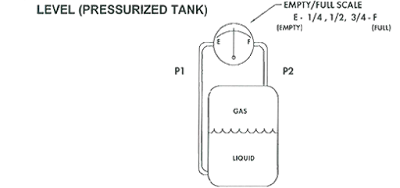Pressure Drop Across Filters, Heat Exchangers, Condensers, Evaporators, Pumps and Valves
 |
| Differential Pressure Measurement Across Filter (courtesy of Orange Research) |
Monitoring pressure drop – wherever it occurs – can offer incremental opportunities for improving process conditions and savings. Pumps and compressors move liquid or air within each process at a high cost, sometimes being driven harder than required. Reducing pressure lost within each process component may reduce the need for larger, more expensive pumps and compressors, and generally create more efficient flow and a better end product.
Flow Measurement
 |
| Differential Pressure to Measure Flow (courtesy of Orange Research) |
Flow is another common application for differential pressure gauges. There are countless types of flow meters in use today. The number one method for measuring flow is differential pressure flow monitoring. DP flow meters are especially attractive options for larger pipes. The cost of many flow meters goes up exponentially as the pipe size grows, because the scale of the flow element must increase to handle such large flows.
The popular solution is to cut the pipe, install an orifice plate and measure the pressure drop across the orifice plate. A DP flow meter is designed to handle the square root relationship between the flow and the differential pressure created, using Bernoulli's Law. This represents a high accuracy solution at a lost cost.
Like orifice plates, venturis and nozzles also create slight pressure drops that use differential pressure and square root flow to measure flow rates.
Level Measurement
 |
| Differential Pressure for Level Measurement (courtesy of Orange Research) |
Differential pressure gauges also measure liquid level. Again, like flow meters, there are many types of level gauges. A simple, relatively inexpensive solution is to use a differential pressure gauge to indicate the level of a liquid within a tank. In open tanks, the high pressure side of a DP gauge is ported to the bottom of a tank while the low pressure side is mated to atmosphere. In this scenario the DP gauge is measuring a column of liquid within the tank, resulting in a reading that reflects the height of the liquid within the tank, often displaying inches or feet of water readings, or percent-full readings.
For pressurized tanks, such as cryogenic tanks, again the DP high pressure side is ported to the bottom of the tank, but the low pressure side is ported to the top of the tank. The result is a measurement of the column of liquid in the tank (the liquid height), often giving a read-out in inches of water or percent-full.
For more information on the application or use of differential pressure gauges, contact Advance Instruments. Call them at (888) 388-6446 or visit https://advanceinstruments.com.